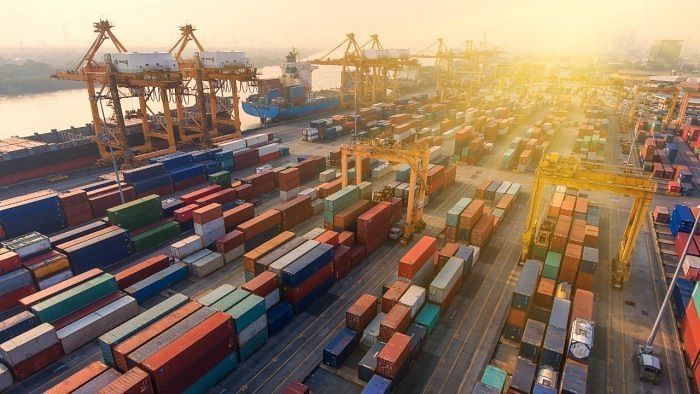
The most-significant macroeconomic challenges that the Indian economy faces at this juncture is the so-called twin deficit problem: fiscal deficit and current account deficit (CAD).
In her fifth and the second Narendra Modi-led National Democratic Alliance (NDA) government’s last full Budget presented on February 1, Nirmala Sitharaman proposed several measures to ensure that her promise of fiscal consolidation by 2025-26 was on track, not the least by projecting that the fiscal deficit would be 5.9 percent of the GDP.
What is, however, unclear is how the CAD would be reined in.
According to the Reserve Bank of India (RBI), the CAD was increasing alarmingly in 2022. From 1.2 percent of the GDP in March, CAD had escalated to 4.4 percent within the next six months. Indications are that this figure would have risen even further by the end of the third quarter (Q3) of 2022-23, and this should ring alarm bells for the government. A growing CAD would increase India’s external debt, which could put further pressure on the Indian Rupee.
Also Read | India needs strategic policies to boost exports
The Union Budget should have taken several measures to ensure that the CAD is reduced by ensuring, on the one hand that India’s exports are incentivised and that the increasing levels of imports can be reduced by strengthening the domestic manufacturing sector, in particular.
India’s export incentives had to be rejigged after a dispute settlement body of the World Trade Organization (WTO) ruled in 2019 that five sets of India’s export promotion measures in 2018 were incompatible with the rules of the Agreement on Subsidies and Countervailing Measures. This ruling came after the United States questioned the legality of the schemes, including the Merchandise Exports from India Scheme (MEIS) and the Special Economic Zones (SEZ) scheme.
Following the dispute, India replaced the five schemes with the Remission of Duties and Taxes on Exported Products (RoDTEP) scheme in 2021 that would refund duties, taxes, and levies, at the central, state and local level, borne on the exported product, including prior stage cumulative indirect taxes on goods and services used in the production of the exported product.
In 2022-23, the Union Budget allocated Rs 13,700 crore for the scheme, which was also the revised estimate. This is somewhat surprising since the RoDTEP scheme was expanded during the year. When it was introduced, the scheme covered 8,555 tariff lines at 8-digit of Indian Trade Classification, but several export-oriented sectors such as pharmaceuticals, iron and steel, and organic and inorganic chemicals were excluded from its ambit.
However, in the first week of December, the RoDTEP scheme was expanded to cover 10,436 tariff lines, and all the sectors excluded earlier were entitled to the benefits. Despite this expansion in its coverage, the revised estimates for the scheme presented on February 1 shows that there was no increase in spending over the budgetary allocations.
For the next financial year, the RoDTEP scheme has been allocated Rs 15,000 crore, a mere 10 percent increase over previous year’s allocation. The allocation seems grossly inadequate as several industries and export promotion councils have been making representations to the government, arguing that the rates of remission of duties were much lower than was desirable as per data submitted by them. More importantly, the views of the exporters were endorsed by Rajya Sabha’s Standing Committee on Commerce that had emphasised the need for a systematic review of the scheme.
In 2021, the government initiated the Production Linked Incentive (PLI) scheme with three clear objectives: to put the domestic manufacturing sector on track, to create jobs, and to help reduce India’s import dependence in critical sectors. For this purpose, 13 sectors were selected including textiles, automobiles and components, pharmaceuticals and their active ingredients, large scale electronics manufacturing, and telecom and networking products. But more than two years after its launch, most of these sectors are struggling and India’s import dependence has increased, causing the CAD to rise.
Also Read | Export outlook may remain flat next year: Survey
The expectation from Finance Minister Nirmala Sitharaman was that the PLI scheme would be rejigged, and greater emphasis laid on addressing its deficiencies. Surprisingly, budgetary allocations on the PLI schemes in almost every sector have been reduced in Budget 2023, some being subjected to heavy cuts. This trend does not bode well for India’s manufacturing sector and, especially its ability to replace imports in some of the critical industries.
(Biswajit Dhar is Professor, Centre for Economic Studies and Planning, School of Social Sciences, Jawaharlal Nehru University.)
The views expressed are the author's own. They do not necessarily reflect the views of DH.